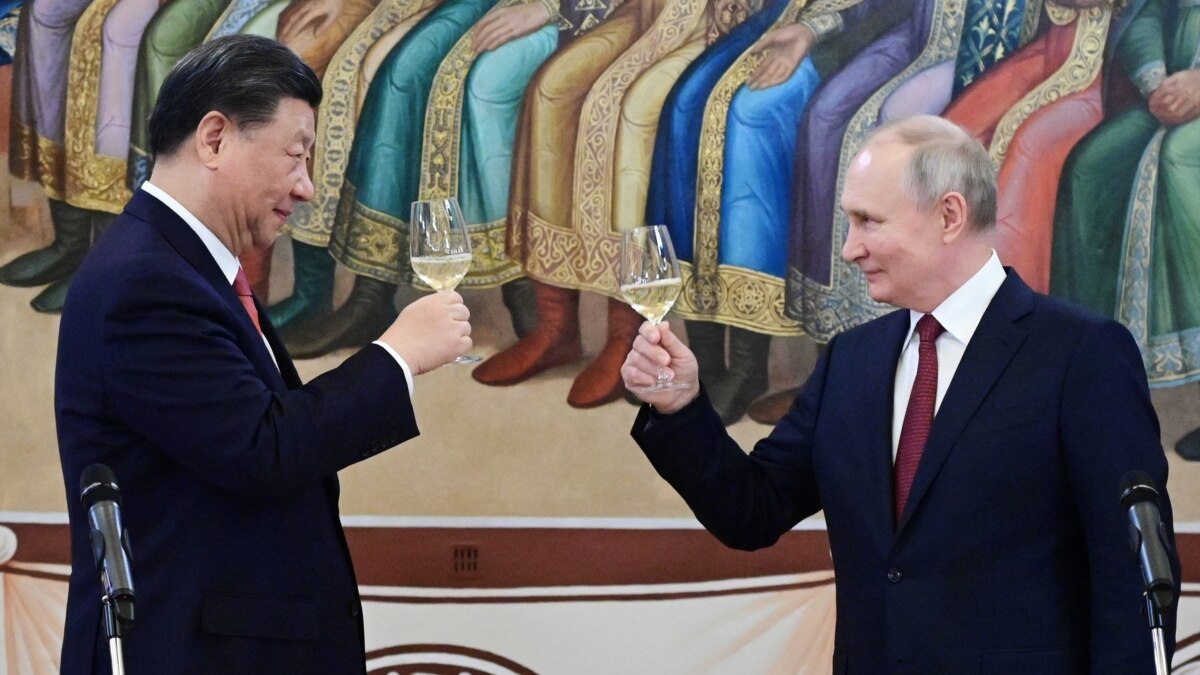
Chinese and Russian cooperation has grown significantly in the past three decades thanks to joint work on energy trade, politics and official visits, analysis shows.
There was a ‘limited’ Sino–Russian cooperation intensity in 1992–1995, which grew from then until 2007 and then rose. The bilateral relationship grew progressively, with no exponential growth or peaks, according to the study.
There were no or dramatic changes following Russia’s 2014 annexation of Crimea.
The study, by Maria Papageorgiou, from the University of Exeter, and Alena Vysotskaya Guedes Vieira, from the University of Minho, is published in the journal Europe-Asia Studies. They developed a “Bilateral Cooperation Intensity” index, to measure military, economic and political cooperation between 1992 and 2019.
The index shows after 2008 energy trade assumed a new importance in Sino–Russian cooperation.
Only political cooperation reached a ‘comprehensive’ level in 2000–2003) and remained at this level. Military cooperation was limited in the early 1990s, becoming slightly stronger after 1995, decreasing between 2008 and 2015 and then increasing.
Economic cooperation was limited in the early 1990s, falling lower at the second half of the decade and the early noughties, rising between 2004 and 2015, before finally reaching ‘enhanced’ intensity in 2016–2019.
Dr. Papageorgiou said “Bilateral cooperation has gradually strengthened since the early 1990s, without abrupt changes. Political cooperation structures the Sino–Russian relationship and is its driving force. Military cooperation has seen the most varied pattern of evolution, rather than a gradual strengthening.”
The BCI Index aggregates the results of three individually measured cooperation areas: military (arms transfers, military exercises), economic (overall trade, energy) and political (United Nations General Assembly voting similarity, state visits by officials). The overall score of the BCI Index reveals how a bilateral relationship has progressed (strengthened, weakened or remained constant).
At the beginning of the period analysed there were no bilateral joint military exercises, cooperation rose to ‘limited’ in 1996–1999, remaining there until the early to mid-2000s. A slight increase was seen in 2004–2007. In 2008–2011, cooperation intensity progressed to the ‘moderate’ level. Cooperation was most “enhanced” in both 2012–2015, when the first naval exercise took place and in 2016–2019.
Energy trade cooperation was low in the 1990s, growing until it reached ‘comprehensive’, in 2016–2019.
Voting similarity in the UN General Assembly, was ‘moderate’ during 1992–1995 and 1996–1999 and enhanced from 2000–2003 onwards.
The frequency of official visits between the two countries increased significantly, limited in the early 1990s, more moderate in the middle of the decade and ‘comprehensive’ in 2000–2003 and then ‘enhanced’ in 2004–2007. Since 2008, they have remained at a consistent ‘comprehensive’ level, a regular schedule of official visits.
Dr. Vysotskaya Guedes Vieira said “Sino–Russian relations have strengthened significantly. This confirms the existence of growing, dynamic and multifaceted cooperation, from a rapprochement in the early 1990s to a strategic partnership in the mid-1990s, to a further upgrade marked by the 2001 Treaty of Friendship and a comprehensive strategic partnership in the 2010s.”


